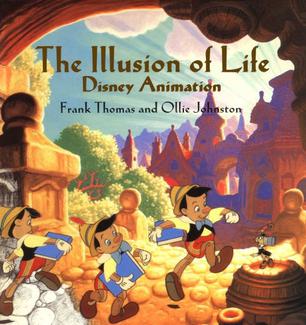 |
| The Illusion of Disney Animation |
The basic principles of animation were published in 1981 by Disney animators Frank Thomas and Ollie Johnston in the book The Illusion of Disney Animation. These 12 rules have been referred to as the 'Bible of Animation' and was been voted the best animation book of all time 1999.
The 12 basic principles are:
1. Squash and Stretch
This effect and a feeling of gravity to an object. It is important to a good animation as no object stays perfectly solid as it moves. It can also be used to a comical effect and is important when animating facial expressions and dialogue.
 |
| This is the effect squash and stretch creates when it is used. |
Anticipation is when an animator adds realism to a character or object by including the whole sequence of a movement. This is important to movement as when someone moves, they have to do something to create this action. For example, if someone is throwing a ball, they would have to pull their arm back, and possibly lean back or bend their knees.
 |
| Anticipation creates a more realistic sense of movement |
This is when someone completes and action and does not abruptly stop, but instead completes the action fully. This is important to an animation as it is far more realistic than not following through because when someone completes an action they would not stop immediately.
Overlapping action is the term that refers to other parts of something moving when they are in contact with another object e.g. hair moving when someone is walking.
This principle follows the simple idea of something moving in an arc if it is attached to a fixed point e.g. a leg moving in an arc as it is attached to the hip. This is important to a good animation as something attached to a fixed point would not be able to move at angles, as the fixed point does not move.
 |
| This is the simplified image of an arc around a fixed point |
5. Secondary Action
Secondary action refers to a movement that might not be created the characters movement, but instead by a secondary source e.g. wind moving someones hair. This is important to animation as it gives a greater idea to the audience of emotions or environment in the scene.
6. Exaggeration
Exaggeration is predominantly used for comedic affect e.g. legs moving very quickly.
 |
| Exaggeration is mainly used in comedy |
Solid drawing gives a feeling of three dimensions, which enhances ideas of volume and weight.


No comments:
Post a Comment